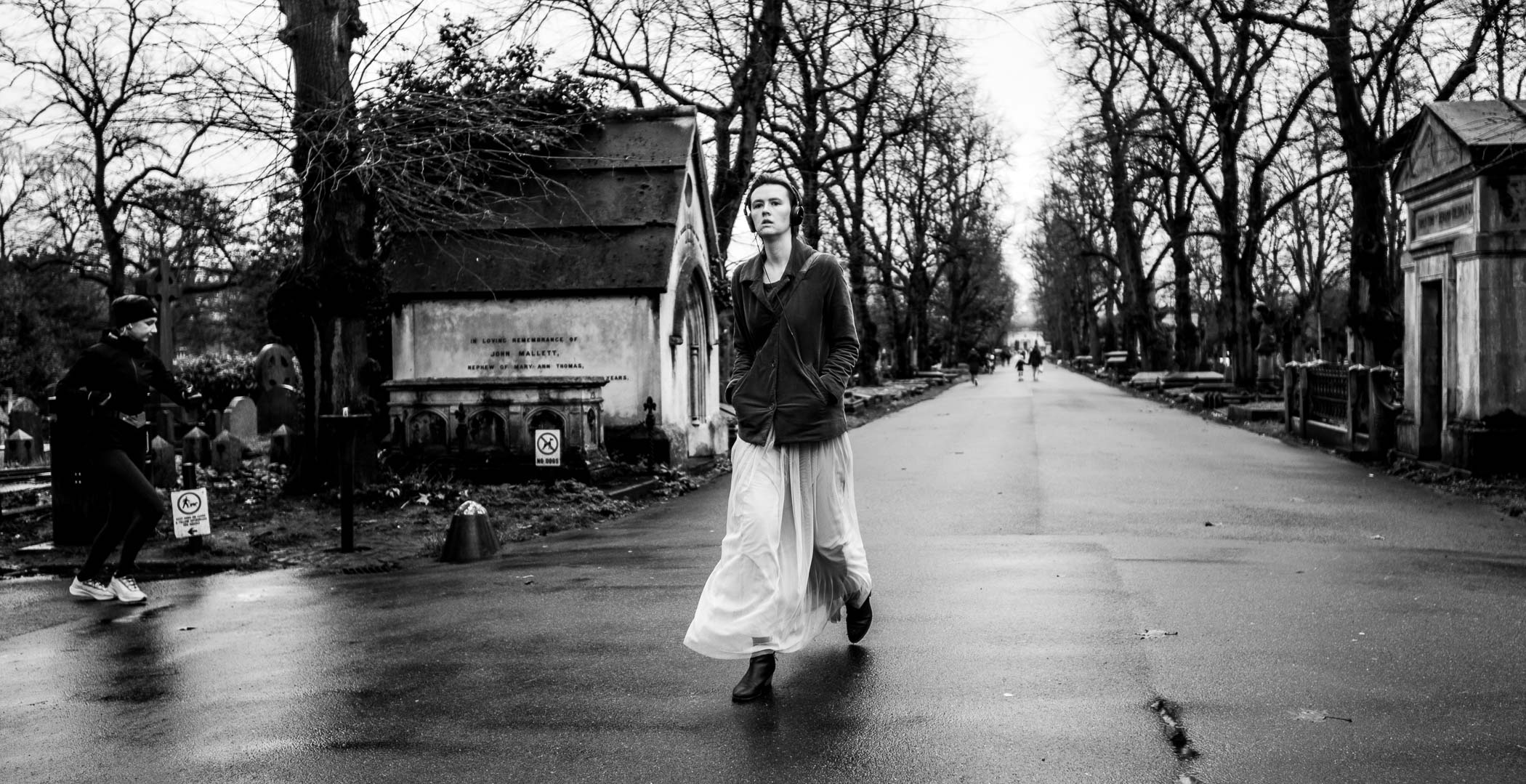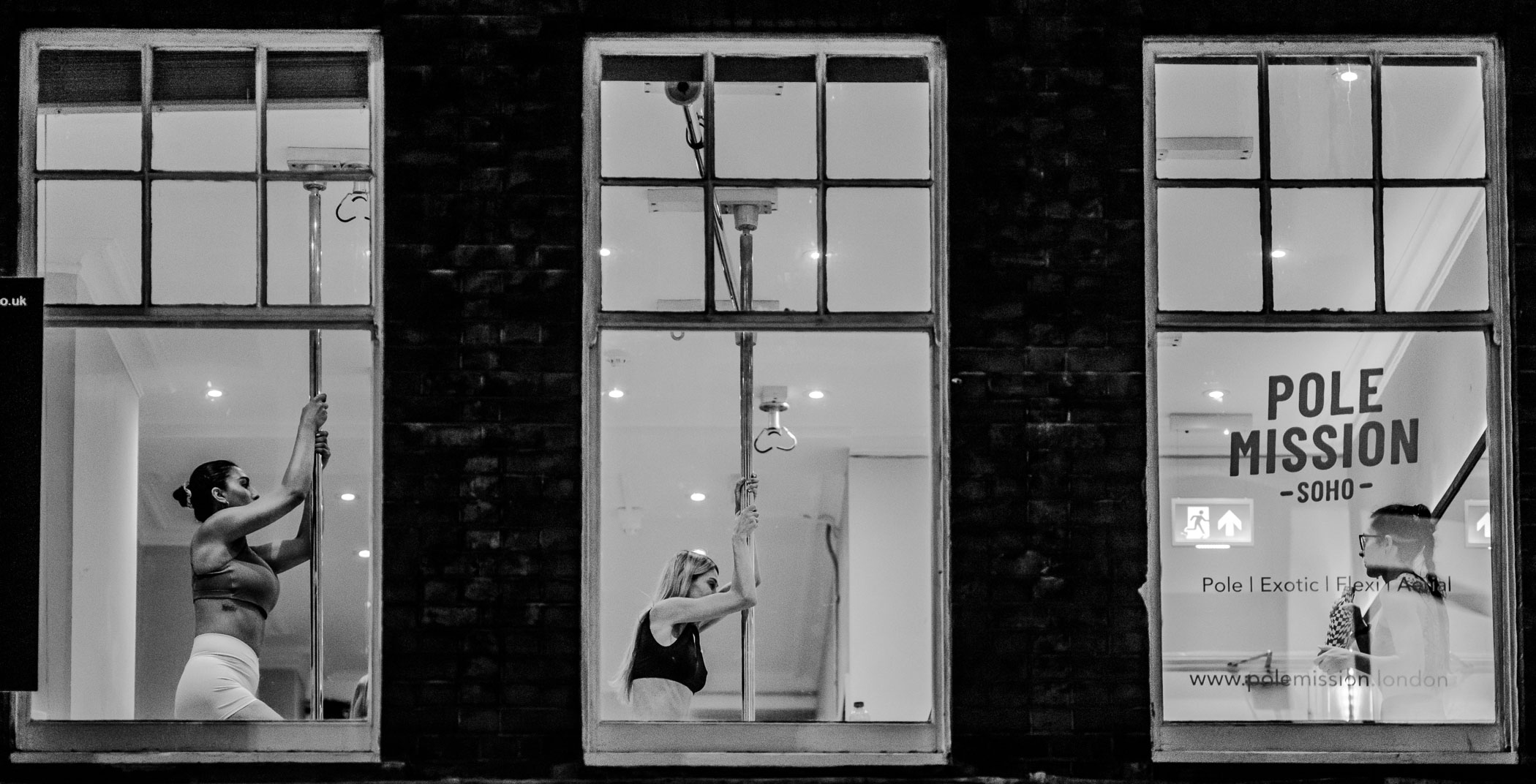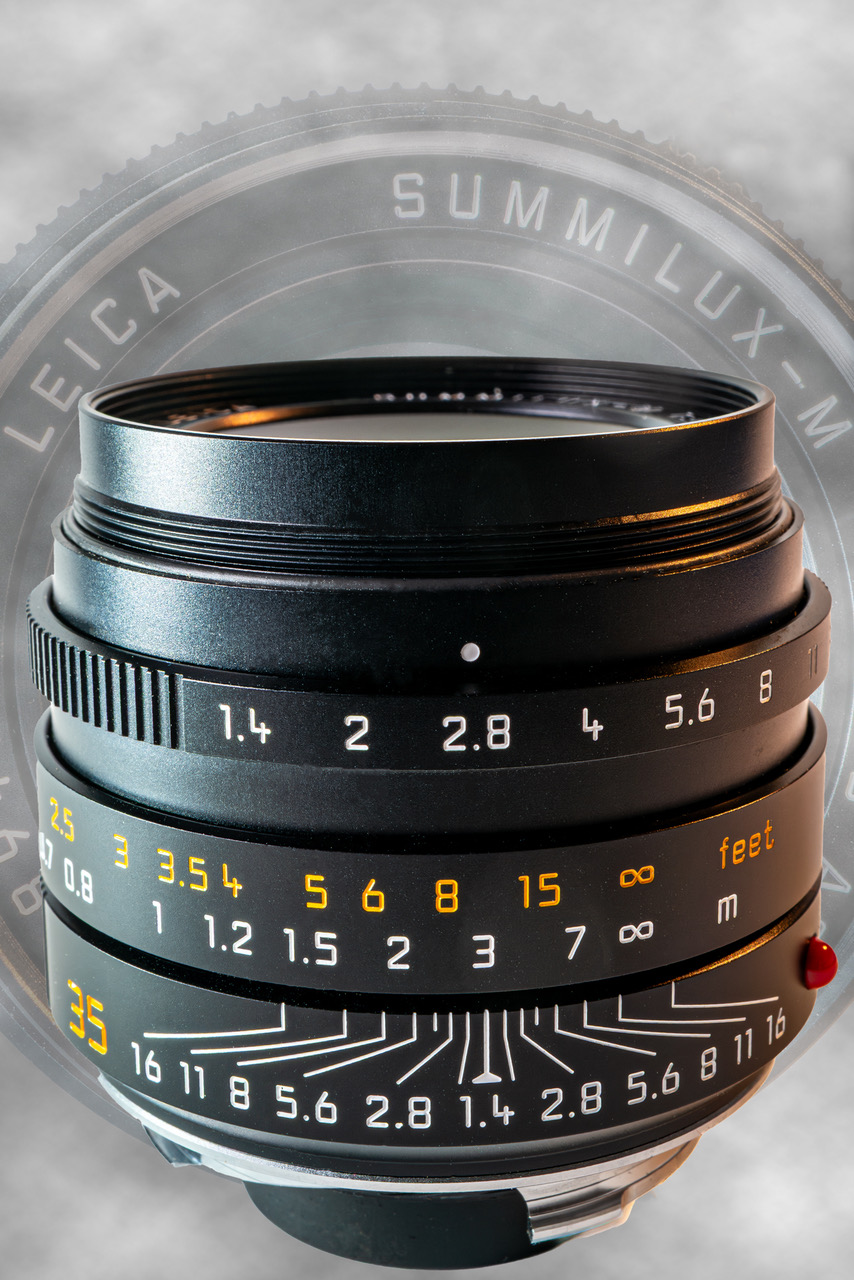The first Summilux I tried was the 75mm, a made-in-Germany version, and I believe it was 2002 when I acquired it. It nearly put me off the range. Focusing wide open with my M7 was capricious and I soon lost heart. I stuck to my reliable Elmarit 21 mm, and Summicron 35mm; meanwhile, the 75mm gathered dust in a drawer.
Then the M8 arrived, and the new screen preview illustrated the issue. The 75mm does back focus. I learned how to compensate, and by the time the full frame M9 had landed, the 75mm became a firm favourite. I had now fallen for the Summilux signature, seen when the lenses are used wide-open, this article may illustrate why.
Being used wide open is what these lenses were designed for and where they excel. Foreground bokeh, background bokeh and subject, pin sharp; well, mostly… and it’s always user error when not. When you nail it, there is almost a three-dimensional look to the images.
The delightfully helpful Yumi at Leica Mayfair arranged a loan for me of the wonderful 90mm Summilux lens. So now I have tried all Summilux focal lengths, and some variations too. The rest of this article is a series of short reviews, with accompanying images, of these unique and remarkable lenses.
I also ran a few comparisons with the Summicron equivalents, after all, these are remarkable lenses too. And, what is more, they are smaller and less costly.
21mm Summilux
First introduced 2008. Still in production. Current RRP £7,030.
The widest of the range, and it is no shrimp. It is however something exceptional. I love this lens. A 21mm that offers truly shallow depth of field. I have used it for still life, impact portrait, events, and landscapes where the subject is isolated against atmospheric background and foreground. Strongly recommended.
24mm Summilux
First introduced in 2008. Discontinued in 2020. Secondhand price on eBay £3,700, if you can find one.
When Leica introduced the 28mm Summilux, it was always likely that the 24mm would be dropped. I feel it’s a shame. Smaller and lighter than the 21mm, it is an astonishing performer. Wide, but with even more depth separation than the 21mm. Super easy to focus. No one needs both lenses, of course. On balance, I would recommend the 24mm.
28mm Summilux
First introduced in 2014. Still in production. Current RRP £6,330.
The versatility of this lens is astonishing. There is nothing it cannot do. If you buy just one Summilux, and that, of course, would be the sensible thing to do, you will never regret this being the one. I often focus on set range, without looking through the finder, and it’s so reliable even at f/1.4. A fabulously discreet street tool. (The Leica Q3, which is fitted with very much the same lens, is remarkable too.)
It’s the perfect balance, a true wide angle, which offers clear focus isolation. It is easy to grab strong imagery when used wide open and were it not for the next contender, the 28mm, it could have been my winner as the best in class. However, the best of the best is…
35mm Summilux
First introduced in 1961. Still in production. Current RRP for the FLE £5,240. Steel rim RP £3,450. First Aspherical 35mm ‘lux, the so-called AA: Price on eBay, around £18,000.
I have been fortunate enough to have tried all three variants of the 35mm ‘lux. It is an astonishing lens. If I had to shoot pictures to save my life, and could only take one lens with me, it would be the 35mm ‘lux. This lens is, simply, as good as it gets.
The FLE is fabulous. Tough as a tank, and yet subtle as a whisper. The AA, and this is probably my imagined reaction, has something even more magical about it. Leica used hand-ground lens elements on the AA, which made it too costly to produce: they were dropped for the next ASPH iteration.
The AA is super rare and now very collectible, hence the crazy secondhand prices. The ‘steel rim’, a brilliant reintroduction of a Mark I Summilux, is a superb effect lens when used wide open. It’s tiny, but so mighty, offering a unique atmosphere, particularly in mixed light. Jono Slack has produced a wonderful article about this gem. A very clever idea from Leica. Try imitating the steel rim on an iPhone sometime….
It is difficult to beat the 35mm ‘lux offering. Astonishing performance in a small package. Highly recommended. It is, in my admittedly biased view, the most useful of the Summilux range; it is also the smallest. If I was asked to suggest, which is the best buy if just one was being bought? The 35mm ASPH wins by a nose over the 28mm ‘lux.
50mm Summilux
First introduced in 1959. ASPH version introduced in 2006. Current RRP of ASPH version £4,130
The 50mm ‘lux is often described as the best 50mm lens in the world. There are a few Zeiss contenders for that accolade, too, but let’s just say the 50mm ‘lux is a gem that far exceeds my ability. I have tried the ASPH and non-aspherical lenses.
The latter can yield some delightful images, but the ASPH is stunning. Used wide open for portraits, it is so effective. Many photographers use the 50mm ‘lux exclusively, and I understand why. Another gem, small, light, as sharp as a razor. You cannot do better in my view.
75mm Summilux
Released in 1980. Discontinued in 2007. Price on eBay for a late mint model £3,500.
The 75mm ‘lux was designed by Dr Walter Mandler (also the designer of the Noctilux). It was said to be his favourite lens. As alluded to earlier in this article, it is a tricky beast to focus. But when you nail it, it has a truly unique look wide-open. I love this lens. Once I accepted that focus was a slightly dark art, I stopped being disappointed and, instead, delighted in success when it happened.
Would I recommend it? Yes and no. If you are charmed by its atmosphere, it is the only lens that can deliver it. However, it takes patience and could not really be considered viable for most professional applications. But I will not be selling mine any time soon…
90mm Summilux
Released 2019. RRP £10,850
The 90mm member of the family is the biggest, heaviest and most costly. I have used one for only 24 hours, courtesy of a Leica Mayfair loaner, and I was enchanted by what it can do. Super shallow depth of field. Super sharp. Remarkable contrast. I was impressed.
However… its size and weight are a challenge for M photography. Not an insurmountable one, but for street work, which I enjoy, discreet, it is not. Would I buy one? Never say never…
A One-Stop Strategy?
Whilst I am a devotee of the ‘lux, the Summicron range should not be eclipsed. Yes, there is something special about the 1.4 signature, but at only one stop slower, the ‘crons are hardly slouches.
Over the years, I have used them all, and they are certainly easier to focus, smaller, and less costly than their extravagant cousins. The 90mm ‘cron is a particular gem, the 35mm is tiny (I have an early ASPH.) and it still delivers beautifully, whilst being so discreet. It intimidates no-one.
Are the Summicrons a compromise? Not in my view. We are talking degrees of excellence. Summilux and Summicron lens ranges are as good as can be found.
Both will deliver beautiful results. They have different advantages, and neither can be said to have significant drawbacks, unless the eye-watering cost of the Summilux is included. However, you do get what you pay for. Furthermore, a secondhand Summilux is an attractive proposition. A gem for life, which, at around 60% retail just now, is definitely worth a look.
The unique atmosphere of a Summilux wide open has always won my heart, but I’ve never been disappointed by the smaller and lighter ‘cron. Talk about first world dilemmas… I really should seek therapy. Let’s not even start on the Noctilux… after all, why stop at one?
This article first appeared in the issue of the Leica Society Magazine, published in April 2025.
More:
Make a donation to help with our running costs
Did you know that Macfilos is run by five photography enthusiasts based in the UK, USA and Europe? We cover all the substantial costs of running the site, and we do not carry advertising because it spoils readers’ enjoyment. Every amount, however small, will be appreciated, and we will write to acknowledge your generosity.














Hi, I briefly owned the 75/1.4. I cannot believe it was Dr. Mandlers favourite lens as I absolutely hated the bokeh. I never captured one good photo at wide open so it rapidly went to a new home!
Hi Brian
It is an odd lens, but yes, the good Dr was a fan. I have something of a love hate relationship with it. It does, on occasion, work so well. But capricious is the adjective. I should probably follow your lead, but something always stops me.
Thanks for the comments, it’s always appreciated. Best, Giles
it would be great to hear your thoughts on the newer 50mm ‘classic’ Lux too. Jono’s article is also recommended reading of course 😉
Thank you Des. I would love to give one a try, I believe the improvements are marginal, but the Apo is regarded by Jno as remarkable. That would be good to sample! Thanks for your interest!
Hi There Giles
it’s a great article, and I think you have described each lens really well. (thanks also for the link on the steel rim). I have a love hate relationship with the 75 ‘lux – I borrowed one for a couple of years, and although I did manage to focus it without too much problem I wasn’t such a fan of it wide open – but this was a few years ago now, and I might feel differently if I had another go!
My feeling is that unless you are actually going to shoot wide open, then you are probably better off with a summicron – not because they are cheaper, but because they are easier to make, and that means that they are probably better than the Summilux at an equivalent aperture (eg f2.8) . . . . . . . but like you, I like to shoot wide open, and f1.4 is a sweet spot!
Anyway – Thank you for the great article
best
Jono
Hi Jono, lovely to hear from you and thank you for the message. I love what you did with the steel-rim, another lens that can sometimes offer a unique feel. I call it the Dolly Parton lens. She once quipped when asked about her appearance: “It costs a fortune to look this cheap”. A very smart woman.
I totally agree that the 75mm is a capricious beast, even when one nails focus, sometimes you think: “Why did I bother?” It can, occasionally, offer up something very special however, so I persevere. Should you ever fancy borrowing mine for another try, let me know. Best, Giles
Hi There Giles
I remember that Dolly Parton quote – she is a lovely woman – although her music isn’t my style!. Mind you, the remake of the steel rim isn’t that expensive!
I think it would be fun to try the 75 ‘lux on an SL3, which would solve all the problems with focusing – thank you for the offer, but I can probably get hold of one.
All the best